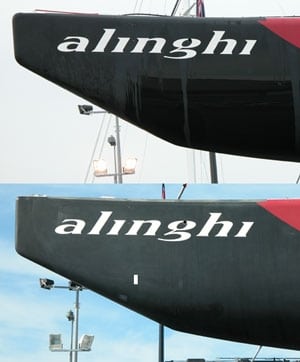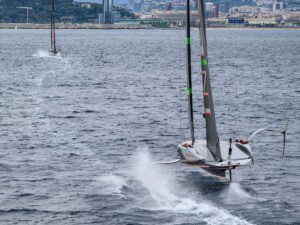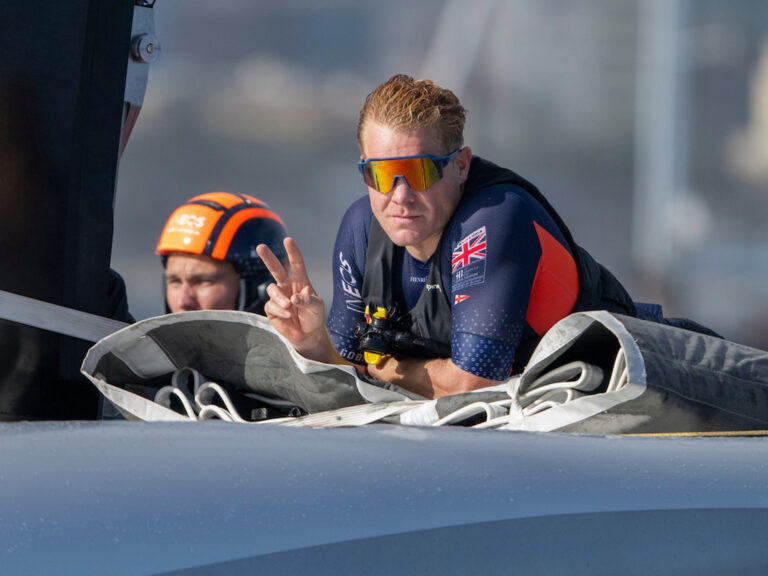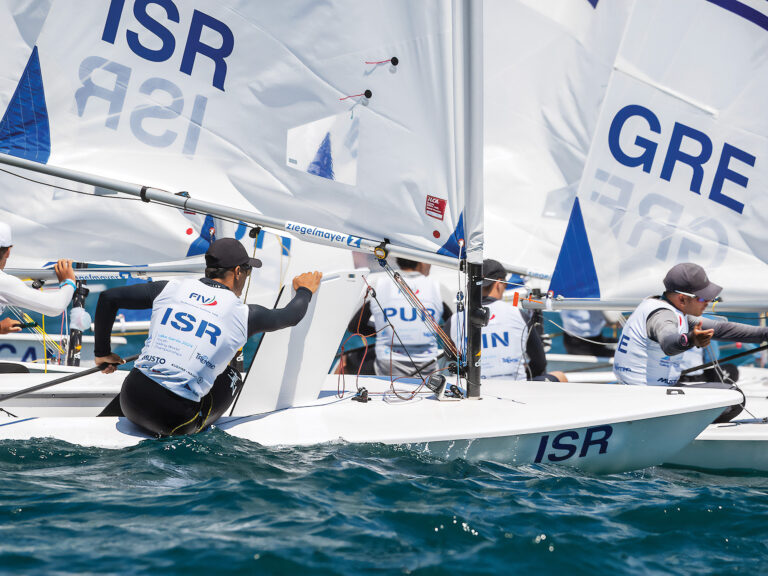
It’s all in the details, said Alinghi designer Rolf Vrolijk, when asked about the changes made to SUI-64 for the America’s Cup. Team New Zealand, on the other hand, appeared to say, “See, we weren’t kidding the last time around,” as they unveiled an NZL-82 that looked virtually unchanged from a month ago. This includes the long, cigar-shaped bulb–one which a few experts even thought might be a joke when it was first shown on Jan. 7–and the moderately sized Hula, or close hull appendage.
The unveiling day for the 31st Americas Cup match, which starts on Saturday, was a much more understated affair with Alinghi dropping its skirt just after 8 a.m. and Team New Zealand following suit less than an hour later. The only real surprise of the day was Alinghis rather confusing use of Can-Can dancers to kick off the ceremony–the Can-Can is a French dance and it was, after all, 8 a.m. SUI-64 looked much as it did when it was last shown to the public, with two exceptions. The bow of the boat had undergone some significant changes. The vertical section was shorter and the stretch between the first and second “knuckle” rose more steeply. According to Vrolijk the bow was not replaced, but rather modified to decrease slightly the measured waterline length and give the team a little bit more sail area. The bow appeared to have more volume than before, but Vrolijk said that wasnt the case. “It just looks like it has more volume, but thats because its a little shorter on the waterline.” The other significant change was Alinghis switch to the dual rod rigging setup that TNZ unveiled in January. Rather than having one thick rod, this system places two thinner rods in a row, reducing the air resistance created by the shrouds.
Aside from a little more wear on the fern painted on the boats stern, NZL-82 appeared virtually unchanged. The bulb, which design team member Andy Claughton confirmed was the same one shown a month earlier, is over 20 feet long. At the ends, it has a circular cross section, but in the middle, it takes on a semi-circular shape with the flat side facing down. The winglets are, as they were a month ago, attached right near the bottom of the bulb. They extend outward perpendicular to the centerline and on a level plane. The “Hula” appears unchanged as well. While Team New Zealand designer Clay Oliver wouldnt reveal many specifics about the construction of the Hula, or the methods used by the measurement committee to ensure that it doesnt touch the hull outside of the half-meter exclusion zone along the boats centerline, he did offer a few insights into how they hope the device will help their boatspeed. “Think of it as a wave resistance reduction feature,” said Oliver, a graduate of the U.S. Naval Academy and a resident of Annapolis, Md. “It changes the wave profile by changing the boats volume distribution.” When asked in what conditions do they expect the biggest benefit from the radical appendage, Oliver replied, “We hope to have an advantage in all winds.”
|
|
| |
|

|
| |
| Stuart Streuli|
| |
|
|
| |
| Will NZL-82, with its cigar-shaped bulb, be a speed burner, or will it flame out when it goes against SUI-64?* * *|
| |
|
|
|
Now an impartial observer, Oracle design chief Bruce Farr offered a few opinions on the two boats. “I think its going to be a very close competition,” he said. “I liked the bow on Alinghi better, I think its a little fuller right at the waterline so it gets a little more effective length to rated length. I would expect, looking at what Ive seen, Alinghi to be faster in light air, especially upwind in light air, and [NZL-82] downwind. If [NZL-82] is going to be strong, it will be in heavy air up and downwind.” Farr also pointed out that Team New Zealand will be sailing with a very short chord and thick keel strut, possibly because theyre worried about keel deflection–and that the long bulb may make the boat slightly less maneuverable because the lead extends such a long way from the keel both forward and aft.









